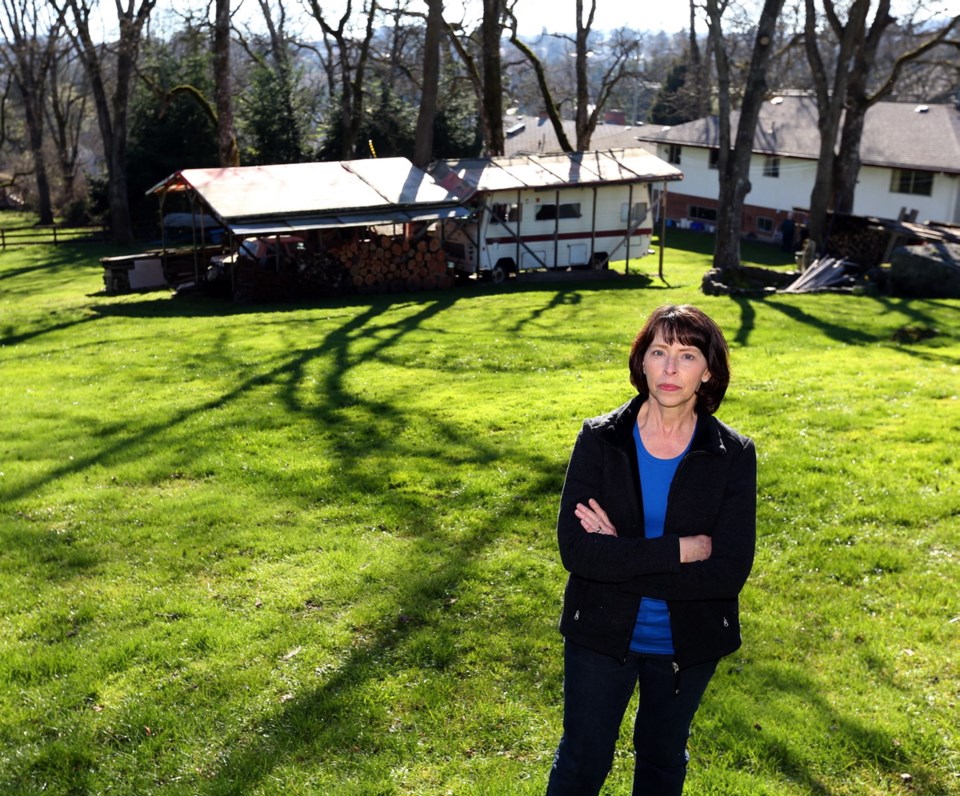Saanich is ramping up ways for the public to have a say about a controversial bylaw that could prevent more than 2,000 homeowners from selling, subdividing or changing their properties to protect sensitive ecosystems.
The municipality has come up with several methods of outreach, including letters to homeowners, a meeting with district staff to address concerns and two open houses.
The move represents “a huge step forward,” said Saanich resident Ted Lea, a registered professional biologist who says the current environmental development permit area (EDPA) bylaw conflicts with provincial and federal regulations on sensitive ecosystems. “This is what we wanted.”
The bylaw appears to affect all waterfront properties in Gordon Head, Cordova Bay, Cadboro Bay and Portage Inlet, said Anita Bull of Saanich Citizens for a Responsible EDPA.
Council chambers were jammed last week with Bull’s supporters. Her mother and uncle, both pushing 90, face major land-use restrictions on 75 per cent of their large lots near Swan Lake. The restrictions were not spelled out when the bylaw was passed in 2012, Bull said. Provincial and federal regulations require sensitive ecosystems identified by aerial photographs to be confirmed by a biologist on the ground, she said.
“Saanich just went and locked down these properties” with the bylaw, Bull said. And staff does not honour exemptions even when, as stipulated in the bylaw, professional biologists hired by homeowners say the property is not sensitive, she said.
“No one wants to buy a property with uncertainty placed on it by the [bylaw],” she told council. The bylaw also requires homeowners to obtain permits for everything from disturbing soil to building a deck.
Saanich needs to “determine what inventory they are trying to protect,” said Lea, who has 40 years of experience working with ecosystems and mapping. “It looks like a good approach.”
A petition against the bylaw already has more than 500 signatures but most landowners don’t realize they’re affected, Bull said.
At an April 28 meeting of the citizens group, only eight of 200 people who attended indicated they were aware of EDPA in 2012.
“We asked how many just found out about the EDPA when we delivered our brochure to them — the rest raised their hands,” she told council last week. “Implementation of the bylaw by staff has been grossly inadequate, with moving goal posts, unclear directions and unscientific thinking.”
Saanich planning director Sharon Hvozdanski said the “check-in” with residents is the result of recent discussions between council’s environmental advisory committee and staff to review how the bylaw is functioning and determine what improvements could be made, she said in an email to the Times Colonist.
Council is now determined that “everyone who wants to have a say on the EDPA should have a chance to be heard,” said Coun. Dean Murdock, chairman of council’s environmental advisory committee. The staff consultation process is “a crucial opportunity for Saanich to listen to concerns, questions and comments regarding the EDPA to ensure that whatever shape the bylaw ultimately takes is meaningful, effective and supported.
“The intent of the bylaw is something, I think, we all support — protecting environmentally sensitive areas. The bylaw needs to achieve that without being overly onerous for property owners.”
Outreach efforts
Saanich is taking a number of steps to reach out to residents about the environmental development permit area bylaw. Feedback will be reviewed and staff will present results to the environmental advisory committee. Comments and recommendations from the committee will be forwarded to council with a staff report.
The outreach efforts include:
• Letters of explanation to all affected property owners and invitations to contact staff for one-to-one meetings, materials review and online feedback.
• Two open houses — the first on June 17 — followed by a town hall meeting.
• Information displays at rec centres and municipal hall.
• Online and print information.
• Presentations and discussions with neighbourhood associations and the development community.



